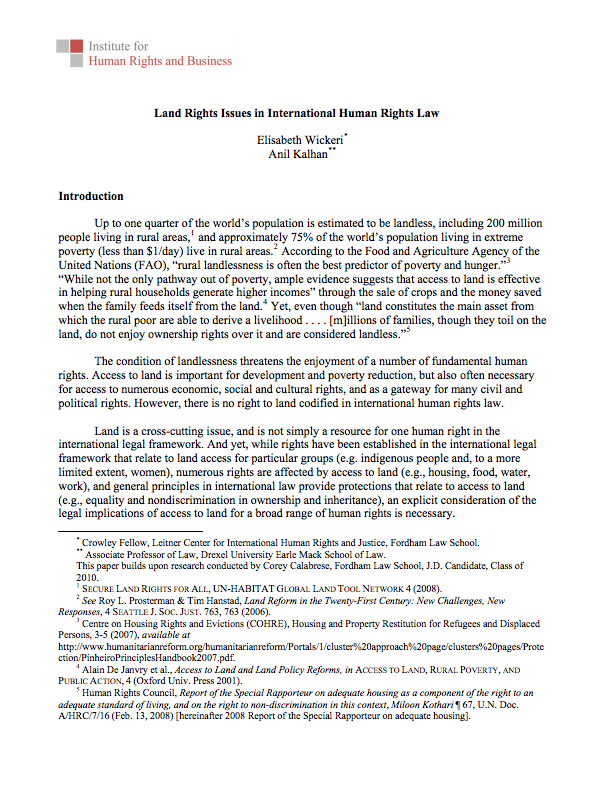Land Rights Issues in International Human Rights Law
Up to one quarter of the world’s population is estimated to be landless, including 200 million
people living in rural areas,1
and approximately 75% of the world’s population living in extreme
poverty (less than $1/day) live in rural areas.2
According to the Food and Agriculture Agency of the
United Nations (FAO), “rural landlessness is often the best predictor of poverty and hunger.”3
“While not the only pathway out of poverty, ample evidence suggests that access to land is effective





